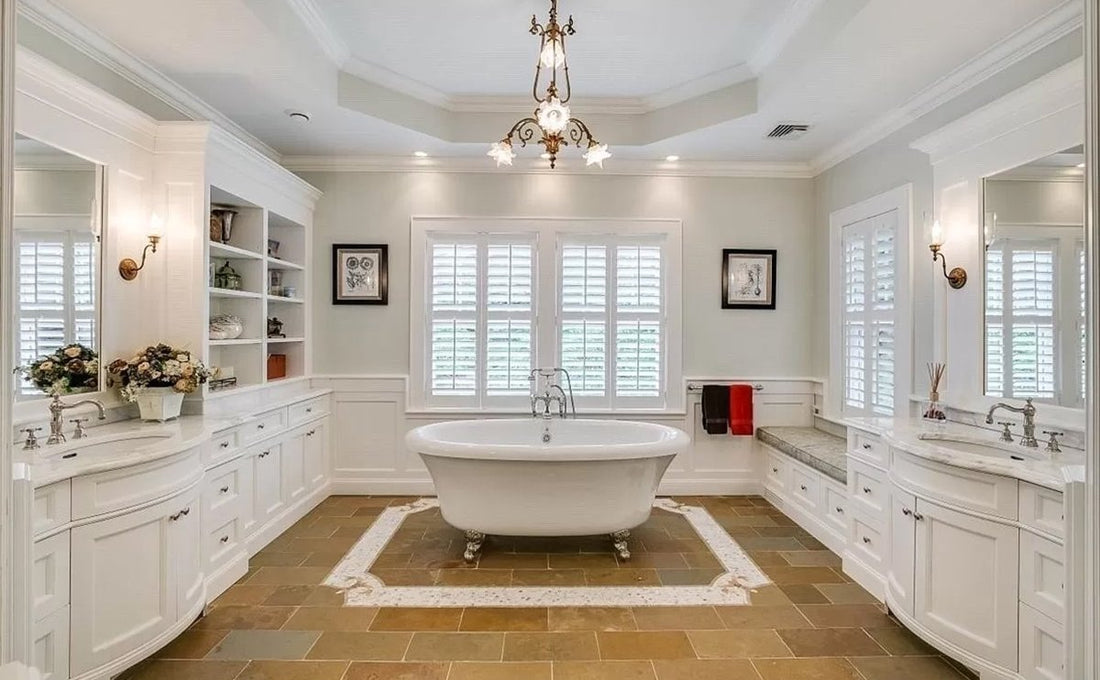
Travertine vs Marble Tile: The Differences, Benefits and Uses of Each
Travertine is sometimes sold as marble, but marble is actually quite a different product than travertine, even though they are both a type of stone. They each have their own unique character that are suitable to different remodeling projects.
If someone asks me whether they should use travertine vs marble tile, I ask about how they will use the material and tell them how they differ to give them a good idea of what to expect when making a decision to use travertine or marble.
In the right setting, either of these two natural stones can be excellent choices to bring elegance and charm to your home or business, as long as you know what to expect from each.
Here are five factors I consider the most important to make the right choice.
1. Location, Location, Location
To borrow a saying from real estate, "location, location, location" can often dictate what stone you should use when it comes to travertine vs marble tile. Travertine is a porous stone that can be sealed or not sealed, depending on whether you want it to absorb water or give it a more polished finished, like this travertine tile.
Marble, on the other hand, is always sealed. Thus, if you have a location outside, like a pool area, travertine is the outstanding choice instead of the more delicate marble. Marble will scratch outside. Most people use marble only inside their homes and businesses, not outside where it is subject to the elements.

Travertine Tile - View Details>>
2. Look and Feel
Let's face it, marble has the ultimate luxurious look and feel. Those beautiful veins are striking in stone backgrounds that can range from cool blues and greens, like Cipolino tile, to warm gold and beige tones. There are also some that are multi-toned, like this Rain Forest Green tile. There is a much wider range of colors possible with marble than with travertine, but that doesn't mean you have to choose it.
Travertine comes in soft beige, white, cream, and gold and also can be a good choice when you want a warmer palette or a rougher finish, like Roman tile. However, marble also has its own unique "feel" that is prized for keeping cool and smooth, which works well in bathrooms and patios.
3. The Cost Benefit
Travertine costs about half of what marble costs and thus is a good choice for very large projects, where the cost of marble might be prohibitive. Marble tiles can be used for accents in walls and floors and combined with other types of tiles too, if cost is an issue. When price is no object, then marble can make a stunning impression in large estate sitting areas like this one, or like in the lobby of a fine hotel.
Otherwise, homeowners may find they prefer marble for a narrow hallway bathroom entrance or on a fireplace surround, where the use is distinctive but not too exorbitant in cost.
4. The Question of Durability
Travertine and marble chips and scratches can be repaired by filling them in, if they even happen. Both stones may end up needing touch-ups over time, but surprisingly, travertine ends up being the more durable of the two. Both stones are porous, but travertine is more porous than marble and can be used without being sealed in outside areas where you don't want to slip around from standing water on the stone.
However, both stones can be sealed to keep them from being stained by liquids, like wine or soy sauce or even bathroom cleaning products, if used in the kitchen or bathroom. You can tell when your stone needs to be resealed because the stone starts to absorb water.
5. Know How to Maintain and Care for Your Stonework
Both travertine and marble are vulnerable to acidic liquids in the kitchen, which can etch as well as stain the surface. When cleaning them avoid harsh chemicals and use soap and water only. Sealing them once or twice a year can help to keep them in good shape, but proper care and maintenance is important when using stone in your home or business.
Spills need to be wiped up immediately. For this reason, both marble and travertine are used on backsplashes, floors, and walls, more often than on countertops. If used on countertops, it will need to be sealed and kept out of direct sunlight.
The resins in some sealants can also cause the stone to discolor or fade in direct sunlight. So, close the shades during the sunniest part of the day or use them in rooms with indirect light, like a bathroom.

Herringbone Mosaic Pattern - View Details»
The clean look of light color marbles is second to none. Like in this bathroom with black marble waterjet accents.
Again, the proper usage of stone in the proper setting is what creates the best applications.
Summing Up the Differences, Benefits, and Uses
Travertine works well both inside and outside, whereas marble tends to be used indoors. The range of colors is larger with marble, but travertine can be used for warmer palettes.
Both stones need proper maintenance, but veining in darker marbles can hide imperfections that occur over time. Each stone has a different look and feel, suitable for different applications and tastes, however travertine costs about half of what marble costs. It doesn't mean it's any less durable, though.
With the proper maintenance, environment, and choice of color, you can even use both these stones in areas that are damp or high traffic areas, although there may be some wear and tear over time, which can be repaired by a professional. This makes it possible to use marble for countertops in businesses like hotels and bars or include them in the luxury home in the kitchen as well.
These stones are workhorses, not just beautiful, and with the proper maintenance can give years of enjoyment and use.
I like marble the best, simply because of the elegance of the stone and it's wide range of color choices. Which is your favorite and what would you pick for your next project? Leave a comment below and share this article with your friends and followers.




